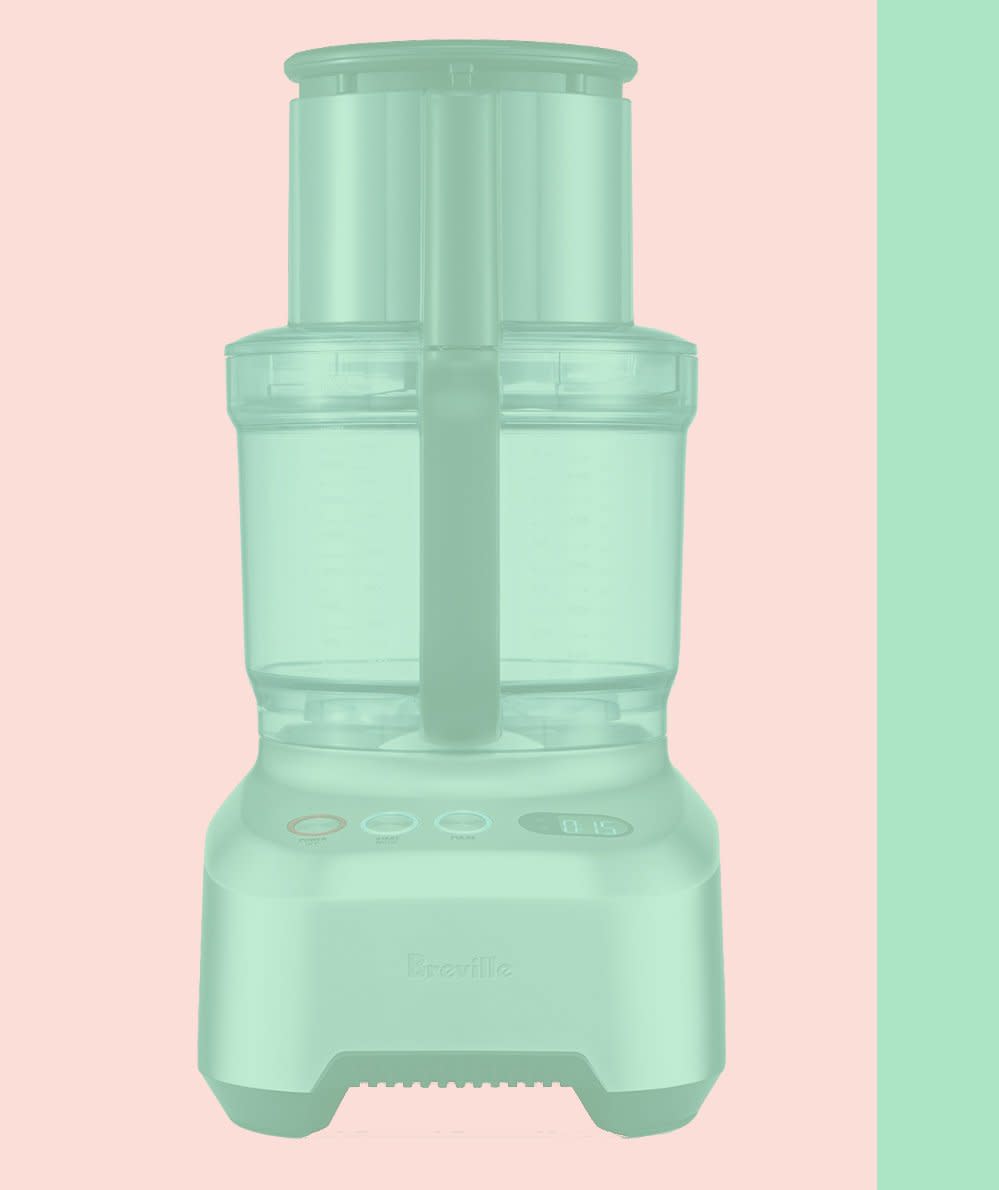When to Use a Blender Versus a Food Processor, According to Kitchen Appliance Experts

Plus all the unexpected foods you can meal prep in each.
Of all the products we fill our kitchen cabinets and countertops with, two of the most practical appliances are the blender and the food processor. At first glance, it may seem like these two tools accomplish very similar tasks, but according to professional chef and founder of Girl and the Kitchen, Mila Furman, that’s not entirely true. “Knowing when to use a blender and when to use a food processor can make your time in the kitchen so much easier and more enjoyable,” says Mila.
It’ll also speed up your prep work and your cleanup time. Here’s a guide for when to use each appliance.
Blenders
Smoothies, Milkshakes, and Protein Shakes
Blenders are the clear winner when it comes to making high-quality smoothies and protein shakes that contain foods like fruit, liquids like coconut water or almond milk, and tough ingredients like kale and ice cubes. The amount of air that’s whipped into the liquid creates a smooth frothiness like what you’d get from any smoothie shop. To eliminate the stop-and-stir catastrophe, make sure to add liquids at the bottom and ice on top.
Frozen Cocktails
Fill your blender jar up with spirits, ice, and whatever other tricks you have up your sleeve and watch them get pulverized into slushy-like oblivion. As with the above, make sure liquids go in before ice cubes.
Soups
Did you know you can use your blender to both puree and cook soup? Toss cooked vegetables in with broth, herbs, and seasonings—you can make a cold soup by pulsing for a minute or so, or leave the motor running for six minutes or longer if you’d like to serve it piping hot. The blades create enough friction to heat up your ingredients.
Cake, Bread, and Pastry Batters
In a pinch, blenders work for mixing batters for the same reason they’re great for smoothies: aeration. Whipping air into the batter creates fluffy results. Just make sure not to overdo it.
Marinades
Using a blender to create a marinade for meat, chicken, fish, or veggies saves a lot of time and effort. Rather than whisking away until you feel like you spent your morning at Crossfit, simply put all the ingredients in the blender and process for less than a minute.
Product Pick: Vitamix Explorian Series E310 Blender, $350, amazon.com
Food Processors
Dips, Salsas, and Tapenades
A food processor is great for making dips (like hummus or Babbaganoush), salsas, and tapenades where a smoother, more homogeneous consistency is desired. You can also use a food processor to make pesto or pâté.
Select Bread and Pastry Doughs
Because of the way a blade is typically set up in a food processor, it can be used in lieu of a mixer to knead certain types of doughs. Some food processors include dough hooks, so if you like making bread at home (or are interested in trying it out), make sure you purchase a model that includes this attachment.
Shredding Cheeses
Shredding cheese at home is more affordable than the packaged, processed stuff, plus you’ll get far superior results when cooking (there’s an increased meltability to the cheese because there are no anti-clumping agents). Using a box grater can ask a lot of elbow grease, though. “One of the least favorite tasks of any chef or home cook—myself included—is shredding cheese,” says Mila. “With modern day food processors, though, there are so many attachments available that make shredding pounds of cheese an easy one-minute process.”
Chopping Vegetables
Like shredding cheese, chopping mounds of vegetables for salads, sides and other dishes can an arduous and time-consuming task. Using a food processor to do the chopping makes this a breeze—you can toss in onions and tomatoes for two-minute salsa, chunks of peeled potatoes for homemade hash browns, or handfuls of herbs for grain-based salads. Unless your food processor has a slicing attachment, the veggies probably won’t come out perfectly uniform (for dishes that demand perfect-looking produce, you’ll need a mandoline), but you can get a rough dice done in a food processor in under a minute.
Product Pick: Breville the Sous Chef Food Processor, $338, amazon.com
When in doubt, Mila says to stick by this golden rule: blenders are better for liquids while food processors are better for solids.

